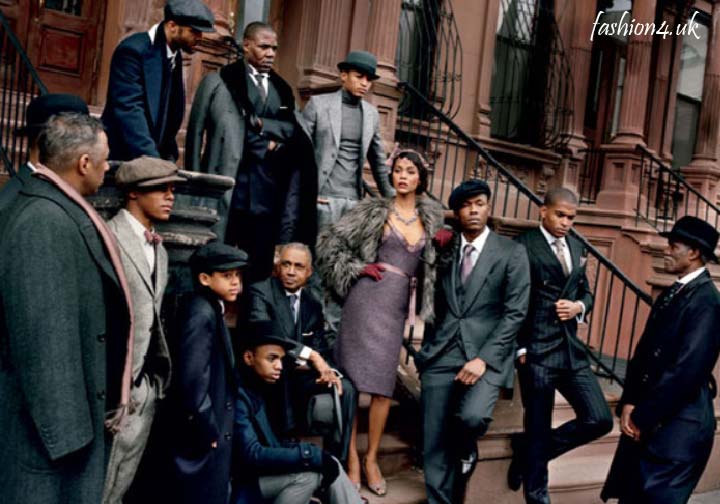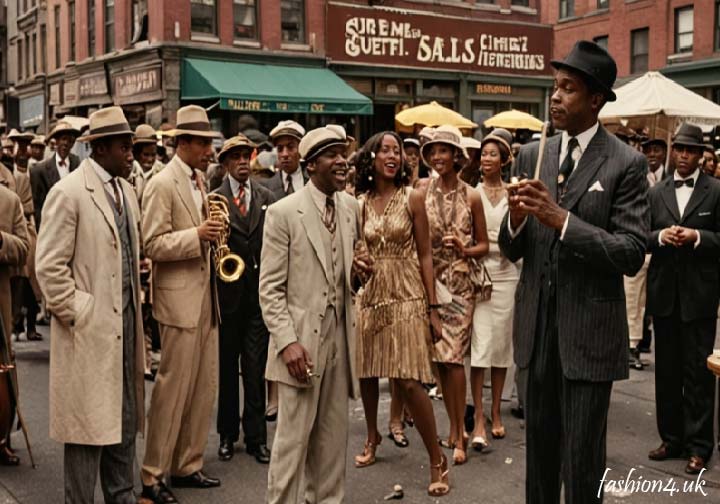
The Harlem Renaissance Fashion wasn’t only a cultural movement; it changed into a revolution in artwork, literature, and style. Born in the early 20th century, it was a time when Black artists, musicians, and writers came together to celebrate their history and venture against the oppressive fame quo. And just like the tune and art of the time, fashion performed a giant position in this cultural rebirth. But what did the Harlem Renaissance style look like? How did it affect the traits of the time, and what impact does it have today? Let’s dive into the elegant international of Harlem Renaissance fashion.
Introduction to Harlem Renaissance Fashion
The Harlem Renaissance Fashion marked a turning factor in Black tradition. Between the Nineteen Twenties and 1930s, Harlem, a New York City community, became a hub of creativity and social alternative fashion. At some stage in this era, it wasn’t pretty much clothes—it became about making a statement. The clothes worn using women and men at some point in this time advised stories of resistance, delight, and class. The ambitious styles reflected the community’s determination to mission racial stereotypes and express individuality.
The Historical Context of Harlem Fashion
Fashion in the Harlem Renaissance became deeply rooted in the social and monetary situations of the time. The Great Migration saw many African Americans move from the rural South to the city North, bringing with them new thoughts, cultures, and styles. This motion coincided with the upward thrust of jazz music, prohibition, and the speakeasy lifestyle, which all played a role in shaping the fashion of the era.
The World War I era also brought prosperity to many African Americans, giving them access to higher jobs and more disposable profits. With this newfound wealth, Black communities should have enough money to dress with extra beauty and aptitude due to the upward thrust of tailor-made fits, flapper clothes, and steeply-priced add-ons.
Key Influences on Harlem Renaissance Fashion
Several factors prompted the fashion of the Harlem Renaissance. European trends, particularly those from Paris, stimulated Harlem’s elite, who sought to emulate the glamorous lifestyles they saw abroad. But it wasn’t pretty much imitation—Harlem residents blended European styles with African and Southern influences to create something precise. This fusion resulted in ambitious patterns, vibrant colours, and a normal feel of extravagance.
Iconic Pieces of Harlem Renaissance Fashion
Specific clothing gadgets have become iconic throughout the Harlem Renaissance. For guys, the zoot in shape turned into a popular choice. This healthy featured exaggerated proportions, with extensive-legged pants and long jackets flared at the knee. It became a fashion that demanded interest and symbolized defiance against societal norms.
For ladies, flapper dresses have been all the rage. These dresses were frequently adorned with fringe, beads, and sequins, creating a sense of motion and strength—much like the jazz track that was famous at the time. Accessories, including cloche hats, pearls, and feather boas, brought to the glamorous look.
Men’s Fashion During the Harlem Renaissance
Men’s style throughout this time became all about sharp lines and class. Tailored fits, regularly in bold pinstripes or solid darkish hues, have been staples of Harlem Renaissance fashion. Wide-brimmed hats, polished shoes, and pocket squares completed the look. The zoot suit, in particular, became an image of insurrection in opposition to the limitations placed on Black men via society. These suits had been more significant than just apparel—they have been a form of resistance and self-expression.
Women’s Fashion During the Harlem Renaissance
Women’s fashion in Harlem turned into nothing brief of progressive. With its dropped waist and unfastened silhouette, the flapper dress allowed girls to break unfastened from the restrictive corsets of the preceding many years. Harlem girls embraced bold styles, high-priced fabric, and tricky beadwork. Evening gowns have been decorated with sequins, lace, and feathers, making them best for a night out at a jazz membership. The present-day girl of Harlem was not afraid to stand out and used style as a tool to express her independence and self-assurance.
The Role of Jazz Culture in Fashion
Jazz songs weren’t just a sound; they became a way of life. Jazz’s colourful rhythms and improvisational nature prompted Harlem’s style in profound ways. People dressed up to visit jazz clubs, where they would be seen and popular. The clothing, just like the tune, was formidable, expressive, and bold. At some stage in the Harlem Renaissance, fashion became a shape of overall performance art, with clothes that shimmered and swayed as much as the dancers.
Fashion as a Statement of Black Pride
More than only a fashion desire, the Harlem Renaissance style became an effective announcement of Black pleasure. It becomes a way for the Black network to reclaim their identification and assert their social location. The elegance and sophistication of Harlem’s fashionistas challenged the racist stereotypes that were universal at the time. Through their apparel, they communicated that they were just as delicate, cultured, and deserving of appreciation as all and sundry else.
Famous Harlem Fashion Icons
The Harlem Renaissance wasn’t quick on style icons. Figures like Josephine Baker and Duke Ellington weren’t simply well-known for their abilities and fashion trendsetters. Josephine Baker and her dazzling stage costumes and glamorous nightgowns have become an image of the present-day, liberated lady. Duke Ellington, acknowledged for his impeccable flavour in fits, set the same old for guys’s style. These figures, among others, helped to define the look of the Harlem Renaissance and continue to encourage style today.
The Legacy of Harlem Renaissance Fashion Today
The impact of Harlem Renaissance fashion is still felt today. Modern designers often draw inspiration from the ambitious shades, patterns, and forms of the Nineteen Twenties and 1930s. For instance, a forgotten match has come back in diverse bureaucracy over many years, while the flapper’s attire remains conventional. Harlem Renaissance style has become a fleeting fashion movement, prompting generations of designers, artists, and style fanatics.
Conclusion
The Harlem Renaissance became more than a cultural awakening—a style revolution. Through their clothing, the human beings of Harlem communicated messages of satisfaction, defiance, and creativity. Their styles had been ambitious, extravagant, and, most significantly, a celebration of Black tradition. Even these days, the Harlem Renaissance style inspires and affects modern trends, reminding us. S . Time while fashion became more than simply garments—it became a powerful assertion of identity and resistance.
FAQs
1. What were the essential elements of Harlem Renaissance fashion?
Key elements included tailored fits, zoot suits, flapper attire, formidable styles, and steeply-priced add-ons like pearls and feather boas.
2. How did jazz tunes influence fashion during the Harlem Renaissance?
Jazz music stimulated fashion by encouraging formidable, expressive, and bold patterns that matched the music’s vibrant rhythms and improvisational nature.
3. Why was the zoot suit vital at some stage in the Harlem Renaissance?
The zoot shape symbolized defiance towards societal norms and became a shape of resistance for Black guys at some point in the Harlem Renaissance.
4. Who have been a few famous fashion icons of the Harlem Renaissance?
Josephine Baker and Duke Ellington were well-known fashion icons recognized for their elegant and influential outfits throughout the Harlem Renaissance.
5. How does Harlem Renaissance fashion affect current traits?
Modern designers frequently draw inspiration from the ambitious colours, styles, and forms of the Harlem Renaissance, which hold to influence contemporary style developments.
READ MORE : Victorian Fashion: A Timeless Journey Through Elegance


